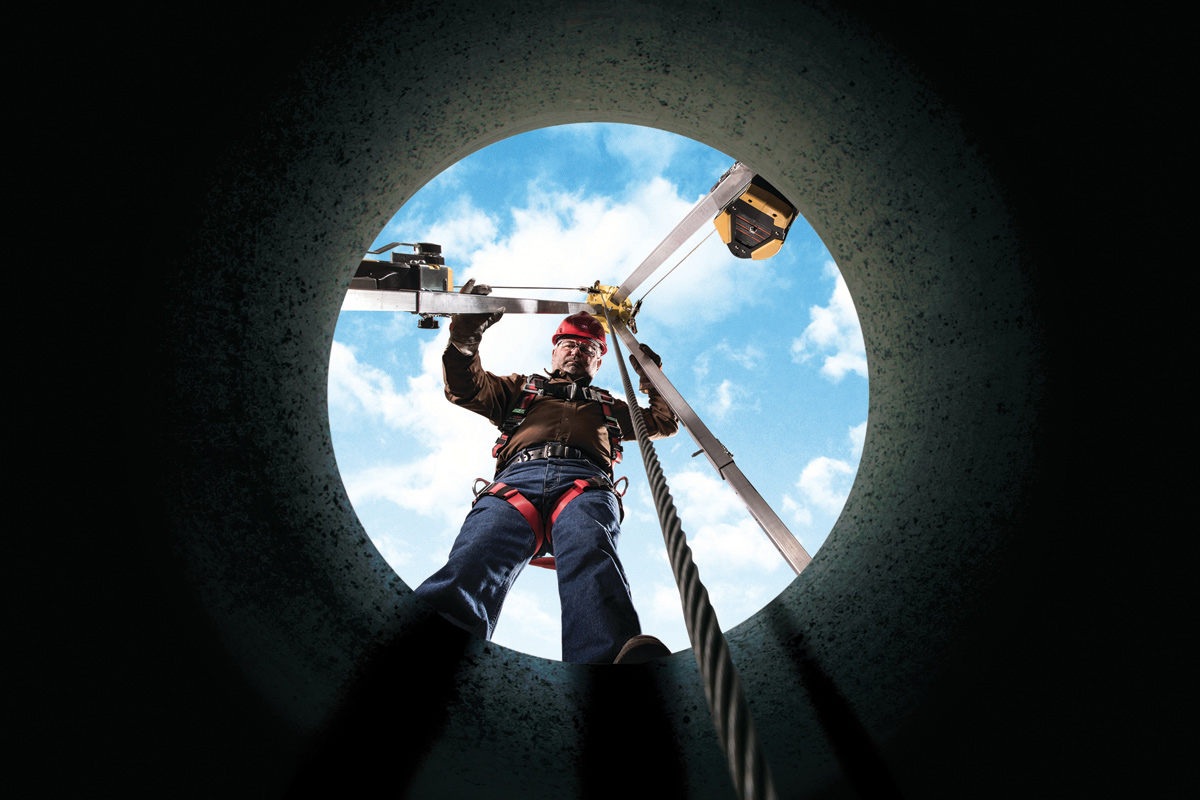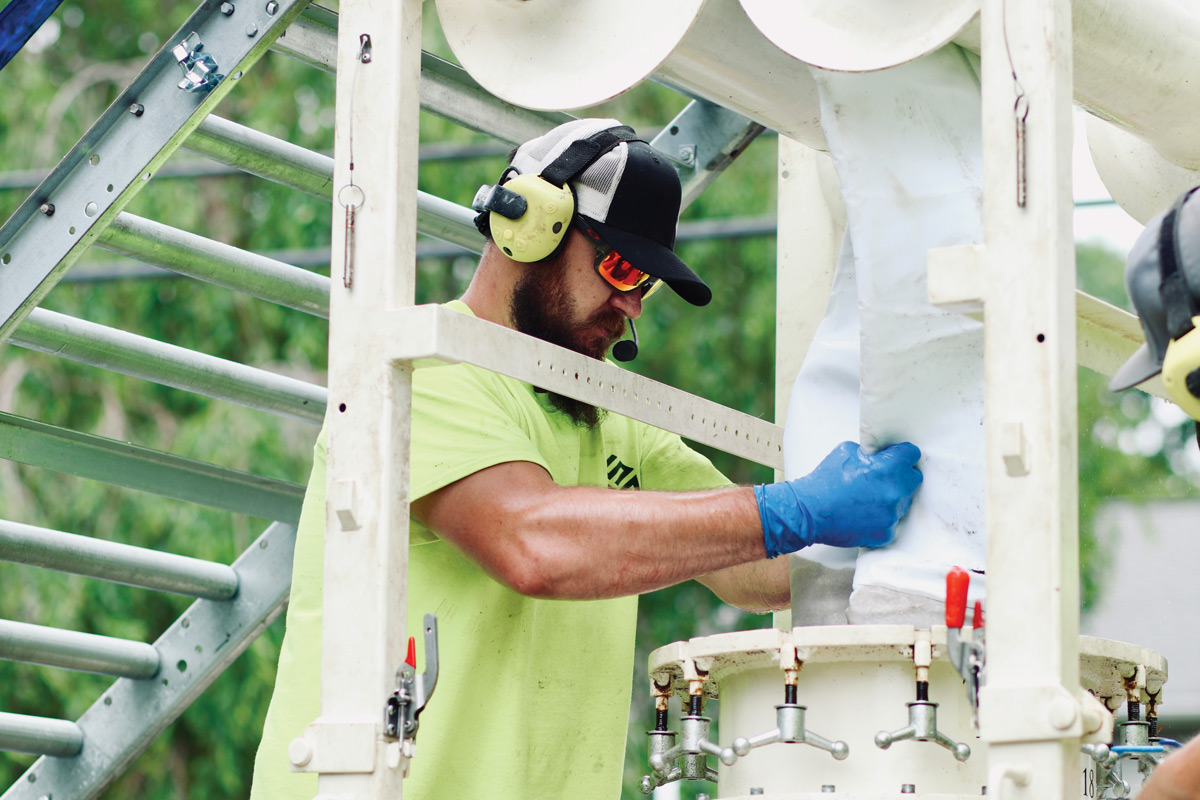
Progressive Piercing Tools: Boring Contractor Aids San Jose Water Co. to Keep Water Flowing
July 22, 2015

Lewis and Tibbitts’ crews are replacing anywhere between 10 and 25 services per day for San Jose Water Company using Grundomat piercing tools from TT Technologies.
Water is a valuable commodity. That’s especially true in the drought-stricken states of the western and southwestern United States, most notably California.
According to published reports from the American Water Works Association (AWWA), trillions of gals of drinking water are lost every year to deteriorating infrastructure. The American Society of Civil Engineers (ASCE), in its 2013 Report Card for America’s Infrastructure, gives the nation’s drinking water infrastructure an overall grade of D and estimates that as much as $3.6 trillion will need to be invested by the year 2020 to overcome the deficiencies in that system. Much of that infrastructure has been in place for decades, some for as long as 100 years.
And when it comes to water systems, it doesn’t take much. In terms of water loss, a small leak can have a significant impact. A 60-psi water system with a small single leak of just 1/16 of an inch will lose approximately 74,000 gals over a three-month period. A ¼-in. leak will result in the loss of an unbelievable 1.18 million gals over three months.
Going into its 150th year in service, the San Jose Water Co. (SJWC), San Jose, Calif., faces many of the same challenges that water providers around the country face, especially the need to update and upgrade mains and service lines. The private water company provides 80 percent of San Jose’s residents with drinking water, along with Los Gatos, Saratoga, Monte Sereno, Campbell and parts of Cupertino. A substantial portion of SJWC’s distribution system was installed between 1945 and 1980.
Under strict regulations imposed by the state of California because of severe drought conditions, SJWC is doing its part to protect this valuable resource by taking a proactive approach to the problem of aging infrastructure through implementation of rehab and replacement program. That includes working with San Jose, Calif.-based utility contractor Lewis and Tibbitts Inc. The mains and services with which Lewis and Tibbitts are working were installed sometime in the 1950s and 1960s.
Few are more in tune with the demands and challenges of such water infrastructure projects than Lewis and Tibbitts vice president and COO Eddie Renshaw. Renshaw schedules and coordinates all water field projects for the company, while organizing subcontractors, project budgets and contracts. He said the work that they do for San Jose Water is approached in a systemic and efficient manner.
“Our crews are replacing mains, service lines and water tanks for San Jose Water. We’re replacing anywhere between 10 and 25 services per day,” Renshaw says.
Lewis and Tibbitts incorporates a variety of trenchless technologies wherever possible. On service line replacement projects, horizontal boring with Grundomat piercing tools from trenchless equipment manufacturer TT Technologies, Aurora, Ill., is often the method of choice.
Contractor Background
Formed in 1973, Lewis and Tibbitts specializes in the installation of water mains, gas and electrical systems and communication lines; and offers an in-house paving crew experienced in installing all types of asphalt restoration. Committed to, “Complete every job on time and within budget,” Lewis and Tibbitts works with some of the biggest utility companies, private developers, and various government entities throughout the Bay Area.
“Our services include comprehensive installation of all types of underground utilities. We also maintain a wide variety of equipment in order to meet the demands of every job in the most efficient and timely manner. Our fleet includes rock trenchers, excavators, backhoes, crane trucks, loaders, water trucks, dump trucks, fusion equipment, as well as all other types of trenchless equipment to meet the varied needs of our clientele,” Renshaw says.
Safety is a significant part of everything Lewis and Tibbitts does. The company is dedicated to maintaining a safe environment for its employees, as well as the general public. Concerns for safety issues have high priority, from our field workers to top management. “We continuously update our knowledge through training, reading, conferences, etc. We make sure we are in compliance with standards set by OSHA, and we strive to exceed those safety standards whenever possible. Safety is always a core concern,” Renshaw says.
Progressive Piercing Tools
Much has been written about the contribution piercing tools have made to trenchless technology over the years. The workhorse of the trenchless industry continues to provide value, productivity and efficiency for contractors around the world.
The piercing tool can be used to install HDPE service lines and mains, like ones being installed for SJWC, in several ways. For service lines and mains up to 2 in. in diameter, crews commonly pull the new HDPE in when removing the piercing tool’s air hose.
“For this process, the new pipe is attached to the air hose once the crew completes the bore and removes the tool,” says TT Technologies piercing tool specialist Ty Green. “The new service is then pulled into place as the air hose is removed. Lewis and Tibbitts crews, however, are able to push the service into place by hand due to favorable soil conditions. This can be done with HDPE services, as well as other pipe materials like copper.”
Another way to install HDPE pipe is to attach it directly to the piercing tool using a threaded PE pipe adapter. This is typically done with larger diameter pipe ranging from 2 to 6 in.
Finally, when installing small diameter pipe (5/8-in. through 1 1/4-in.) the pipe itself can be used as the piercing tool’s air hose by using an air nipple. By making the product pipe function as the air hose, the crew simply removes the tool once the bore is complete and everything is in place.
Service Installation Strategy
According to Renshaw, residents get approximately a one-week notice before any work is performed in their specific area. Lewis and Tibbitts crews work block-by-block, replacing the main and then services on both sides of the street.
“Each morning the project starts with a tailgate safety meeting where crews go and review any potential safety issues and what they might encounter on the project. From there, crews walk the job and make sure all the existing utilities have been marked, whether its gas, sewer, existing water, telephone or power,” Renshaw says.
Mains are replaced before service line work begins. The method used to replace the main depends on the type of pipe material, condition, location and jobsite layout. On a recent project for SJWC, Lewis and Tibbitts crews replaced a section of main through another trenchless method, sliplining using a winch.
“In this particular case, crews actually used a constant tension Grundowinch to pull the new HDPE pipe into the existing pipe,” Green says. “That winch is commonly used for pipe bursting applications, but can be used for a wide range of pulling related applications including underground cable and, in this instance, sliplining. For the project, crews sliplined the 10-in. cement lined steel water main with an 8-in. HDPE pipe.”
For service lines, horizontal boring has proven to be one of the most efficient and effective methods in the rocky clay soil often found in the SJCW service area. Bores take place under driveways, sidewalks, landscaping and the road itself in most neighborhoods.
Typical services range in size from ¾ in. to 1 in. in diameter, with an average length of 30 ft. “Our boring crew is made up of three to four Grundomat operators. Additional crewmembers work on opening up launch and exit pits,” Renshaw says. “After the bore is done they insert the new service and tie it back in to the main. Once the entire system is replaced in a specific area, crews begin pressure testing and chlorinating the new lines, and then we put everything back in service. We work hard to get customers back in service the same day.”
“The entire program that Lewis and Tibbitts has developed with San Jose Water functions like clockwork. Their crews are really a model of efficiency,” Green says.
Jim Schill is a technical writer in North Mankato, Minn.




